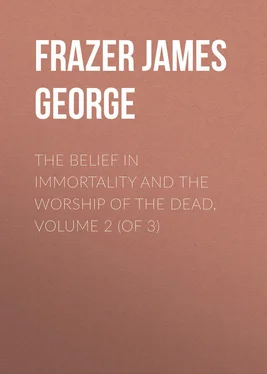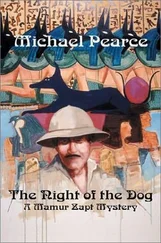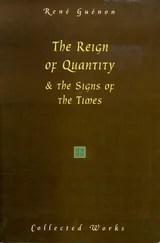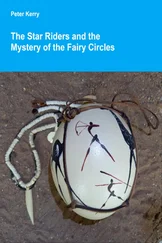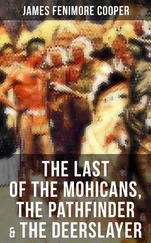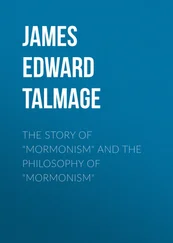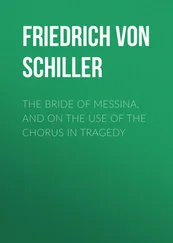James Frazer - The Belief in Immortality and the Worship of the Dead, Volume 2 (of 3)
Здесь есть возможность читать онлайн «James Frazer - The Belief in Immortality and the Worship of the Dead, Volume 2 (of 3)» — ознакомительный отрывок электронной книги совершенно бесплатно, а после прочтения отрывка купить полную версию. В некоторых случаях можно слушать аудио, скачать через торрент в формате fb2 и присутствует краткое содержание. Жанр: foreign_antique, foreign_prose, на английском языке. Описание произведения, (предисловие) а так же отзывы посетителей доступны на портале библиотеки ЛибКат.
- Название:The Belief in Immortality and the Worship of the Dead, Volume 2 (of 3)
- Автор:
- Жанр:
- Год:неизвестен
- ISBN:нет данных
- Рейтинг книги:3 / 5. Голосов: 1
-
Избранное:Добавить в избранное
- Отзывы:
-
Ваша оценка:
- 60
- 1
- 2
- 3
- 4
- 5
The Belief in Immortality and the Worship of the Dead, Volume 2 (of 3): краткое содержание, описание и аннотация
Предлагаем к чтению аннотацию, описание, краткое содержание или предисловие (зависит от того, что написал сам автор книги «The Belief in Immortality and the Worship of the Dead, Volume 2 (of 3)»). Если вы не нашли необходимую информацию о книге — напишите в комментариях, мы постараемся отыскать её.
The Belief in Immortality and the Worship of the Dead, Volume 2 (of 3) — читать онлайн ознакомительный отрывок
Ниже представлен текст книги, разбитый по страницам. Система сохранения места последней прочитанной страницы, позволяет с удобством читать онлайн бесплатно книгу «The Belief in Immortality and the Worship of the Dead, Volume 2 (of 3)», без необходимости каждый раз заново искать на чём Вы остановились. Поставьте закладку, и сможете в любой момент перейти на страницу, на которой закончили чтение.
Интервал:
Закладка:
In more recent years the tombs of the Tooitongas at Mooa have been visited by Sir Basil Thomson, who has described and discussed them. 286 286 (Sir) Basil Thomson, Diversions of a Prime Minister , pp. 379 sq. ; id. "Notes upon the Antiquities of Tonga," Journal of the Anthropological Institute , xxxii. (1902) pp. 86-88.
From an anonymous pamphlet called The Wairarapa Wilderness , written by the passengers of the s.s. Wairarapa and published in 1884, Sir Basil Thomson quotes a passage containing a description of the tombs, with measurements which, he tells us, are accurate as far as they go. From it I will extract a few particulars. The writers inform us that the tombs are built of blocks of coral which vary in length and thickness; some of the largest they found to be from fifteen to eighteen feet long and from one and a half to two feet thick. The largest measured by them is twenty-two feet long and two feet thick and stands between seven and eight feet above the ground. This great stone, now split in two, is at the middle of the lowest step of one of the pyramidal tombs. The height of the steps varies much in the different pyramids; one step was found to be four feet high. The breadth of each step is three feet or more: it has been carefully levelled and covered with coral gravel. The stones fit very closely and are very regular at top and bottom throughout the tiers. The corners of one pyramid observed by the writers are formed of huge rectangular stones, which seem to have been put in position before they were finally faced. On the upper surface of the largest stone is a deep hollow about the size and shape of a large chestnut mortar. Sir Basil Thomson, who has examined this hollow, believes it to be a natural cavity which has been artificially smoothed by a workman. He suggests that it may have been lined with leaves and used as a bowl for brewing kava at the funeral ceremonies. On one mound the writers of the pamphlet remarked a large flat stone, some five and a half feet square; and in several of the tombs they noticed huge slabs of volcanic stone placed indiscriminately side by side with blocks of coral. The writers measured the bases of three of the tombs and found them to be about two chains (one hundred and thirty-two feet) long by a chain and a half (ninety-nine feet) broad; the base of a fourth was even larger. 287 287 (Sir) Basil Thomson, "Notes upon the Antiquities of Tonga," Journal of the Anthropological Institute , xxxii. (1902) pp. 87 sq.
Surveying these various accounts of the tombs of the Tooitongas or sacred chiefs, we may perhaps conclude that, while the type of tomb varied in different cases, the most characteristic, and certainly the most remarkable, type was that of a stepped or terraced pyramid built of such large blocks of stone as to merit the name of megalithic monuments. So far as I have observed in the accounts given of them, this type of tomb was reserved exclusively for the sacred chiefs, the Tooitongas, whom the Tongans regarded as divine and as direct descendants of the gods. The civil kings, so far as appears, were not buried in these massive pyramids, but merely in stone vaults sunk in the summits of grassy mounds.
It is natural, with Sir Basil Thomson, 288 288 (Sir) Basil Thomson, Diversions of a Prime Minister , p. 379.
to compare the pyramids of the Tooitongas with the similar structures called morais or marais which are found in Tahiti and the Marquesas islands. Indeed, the very name morai was sometimes applied to them by the Tongans themselves, though more usually they called them fiatookas , which was simply the common word for burying-ground. 289 289 Captain James Cook, Voyages , v. 424. Elsewhere (v. 364) he speaks of "a morai or fiatooka "; and shortly afterwards, referring to the same structure, he mentions it as "this morai , or what I may as well call temple" (p. 365). As to the equivalence of the words morai and marai ( marae ), see J. A. Moerenhout, Voyages aux Îles du Grand Océan (Paris, 1837), i. 466; and as to the significance of the word in its various dialectical forms, see E. Tregear, Maori-Polynesian Comparative Dictionary , p. 213, s. v. "malae."
In Tahiti and the Marquesas islands these marais were in like manner truncated pyramids, rising in a series of steps or tiers, built of stones, some of which were large, but apparently not so large as in the corresponding Tongan edifices; for in describing one of the largest of the Tahitian morais or marais Cook mentions only one stone measuring as much as four feet seven inches in length by two feet four in breadth, though he found several three and a half feet long by two and a half feet broad. These dimensions can hardly compare with the size of the blocks in the tombs of the Tooitongas, some of which, as we have seen, measure fifteen, eighteen, and even twenty-two or twenty-four feet in length by eight or twelve feet in height. These Tahitian and Marquesan pyramids are commonly described as temples, and justly so, because the gods were worshipped there and human sacrifices were offered on them. 290 290 Captain James Cook, Voyages , i. 157 sqq. ; J. R. Forster, Observations made during a Voyage round the World (London, 1788), pp. 543 sqq. ; Captain James Wilson, Missionary Voyage to the Southern Pacific Ocean , pp. 207 sqq. ; David Porter, Journal of a Cruise made to the Pacific Ocean (New York, 1822), ii. 38 sq. ; D. Tyerman and G. Bennet, Journal of Voyages and Travels (London, 1831), i. 240-248, 265 sqq. , 271, 274, 529 sq. , ii. 13 sq. , 38 sq. ; W. Ellis, Polynesian Researches , Second Edition (London, 1832-1836), i. 340, 405; J. A. Moerenhout, Voyages aux Îles du Grand Océan , i. 466-470; G. H. von Langsdorff, Reise um die Welt (Frankfurt am Mayn, 1812), i. 115, 134; H. Melville, Typee (London, N.D.), pp. 166-169 ( Everyman's Library ); Matthias G – , Lettres sur les Îles Marquises (Paris, 1843), pp. 54 sq. ; C. E. Meinicke, Die Inseln des Stillen Oceans (Leipzig, 1875-1876), i. 49, ii. 180, 183 sq. ; G. Gerland, in Th. Waitz, Anthropologie , vi (Leipzig, 1872) pp. 376 sqq.
But they were also, like the similar structures in Tonga, used in certain cases for the burial of the dead, or at all events for the preservation of their embalmed bodies. Captain Cook seems even to have regarded the Tahitian morais primarily as burying-grounds and only secondarily as places of worship. 291 291 Capt. James Cook, Voyages , i. 157 sq. , "Their name for such burying-grounds, which are also places of worship, is Morai ." Compare id. , i. 217, 219, 220, 224, vi. 37, 41; J. Turnbull, Voyage round the World (London, 1813), p. 151, "the morais , which serve the double purpose of places of worship and receptacles for the dead." Compare J. R. Forster, Observations , p. 545, "To ornament the marais and to honour by it the gods and the decayed buried there, the inhabitants plant several sorts of trees near them."
In the island of Huahine, one of the Society Islands, the sovereign chiefs were buried in a marai , where they lay, we are told, in more than Oriental state. 292 292 D. Tyerman and G. Bennet, op. cit. i. 271.
William Ellis, one of our best authorities on the religion of the Tahitians, tells us that "the family, district, or royal maraes were the general depositories of the bones of the departed, whose bodies had been embalmed, and whose skulls were sometimes preserved in the dwelling of the survivors. The marae or temple being sacred, and the bodies being under the guardianship of the gods, were in general considered secure when deposited there. This was not, however, always the case; and in times of war, the victors sometimes not only despoiled the temples of the vanquished, and bore away their idol, but robbed the sacred enclosure of the bones of celebrated individuals." 293 293 W. Ellis, Polynesian Researches , i. 405. Elsewhere (p. 401), speaking of the Tahitian burial customs, Ellis observes that "the skull was carefully kept in the family, while the other bones, etc., were buried within the precincts of the family temple."
Moerenhout, another good authority on the Tahitian religion, informs us that the marais which belonged to individuals often served as cemeteries and were only the more respected on that account; but he says that in the public marais almost the only persons buried were the human victims offered in sacrifice, and sometimes the priests, who were laid face downwards in the grave, for the curious reason that otherwise the gaze of the dead men would blight the trees and cause the fruit to fall to the ground. 294 294 J. A. Moerenhout, op. cit. i. 470. As to the Tahitian custom of burying the dead in the marais , see also C. E. Meinicke, Die Inseln des Stillen Oceans , ii. 183 sq. , according to whom only the bodies of persons of high rank were interred in these sanctuaries.
Интервал:
Закладка:
Похожие книги на «The Belief in Immortality and the Worship of the Dead, Volume 2 (of 3)»
Представляем Вашему вниманию похожие книги на «The Belief in Immortality and the Worship of the Dead, Volume 2 (of 3)» списком для выбора. Мы отобрали схожую по названию и смыслу литературу в надежде предоставить читателям больше вариантов отыскать новые, интересные, ещё непрочитанные произведения.
Обсуждение, отзывы о книге «The Belief in Immortality and the Worship of the Dead, Volume 2 (of 3)» и просто собственные мнения читателей. Оставьте ваши комментарии, напишите, что Вы думаете о произведении, его смысле или главных героях. Укажите что конкретно понравилось, а что нет, и почему Вы так считаете.
